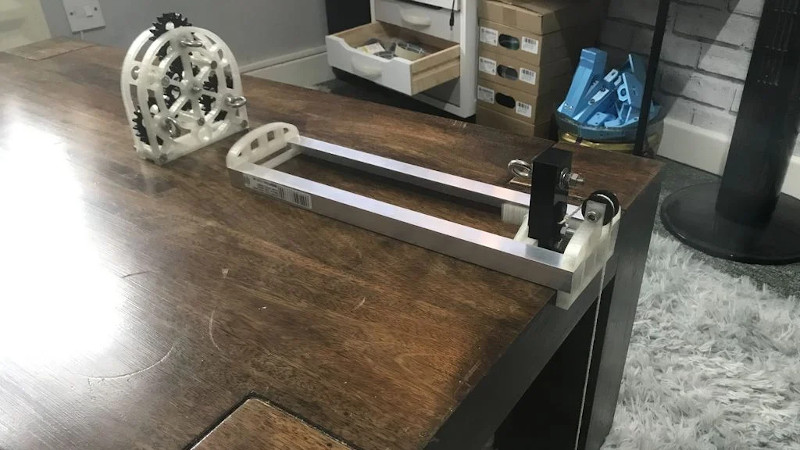Ropes are one of those things that, while possible to make by hand, having a little mechanical help goes a long way in their manufacture. [b33ma247] wanted just such a rig, so set about building one from scratch.
It’s a simple device, but one that makes the task much easier. A series of gears are printed, which assemble on to a frame to form the winding mechanism that weaves the rope. There’s also a slide, a rope separator, and a weight carriage to ensure proper tension is kept on the string during the weaving process. The mechanism is driven by a power drill, though this could be easily replaced with a hand crank if full manual operation was desired.
It’s a project which shows if you have a 3D printer, you can make a lot of other useful tools for your workshop too. We see similar approaches taken when it comes time to wind coils, too. Video after the break.
https://www.youtube.com/watch?time_continue=119&v=U55BZaPbffk&feature=emb_title
















Now I have to wonder if this could be adapted to make furled leaders for fly fishing.
Exactly my thoughts …. Maybe?
Only need to make a few of those set on some larger ones that are set on a larger one still and you can roll your own transatlantic cable.
Haha
Oh, I see that tech is humorously antiquated, fine then, do it with carbon nanotubes and make a space elevator.
Or knit it all out of quantum entanglement and go back in time…
And I didn’t even know this was a problem!
My late neighbour used to make his own rope from used baler twine and I copied his. It’s much simpler than this as it doesn’t use cogs, instead having a block of wood move 3 cranks in parallel. the trade off of course is that it doesn’t rotate in a fashion suitable for mechanical powering, instead moving in a triangular circuit.
Could an electrical cable be placed through the center of the rope strands as they are twisted to form sort of a rope cable sheath?
Possibly, I think you’d want that central bolt/shaft to be hollow, to feed it through.
Twisted, not woven.